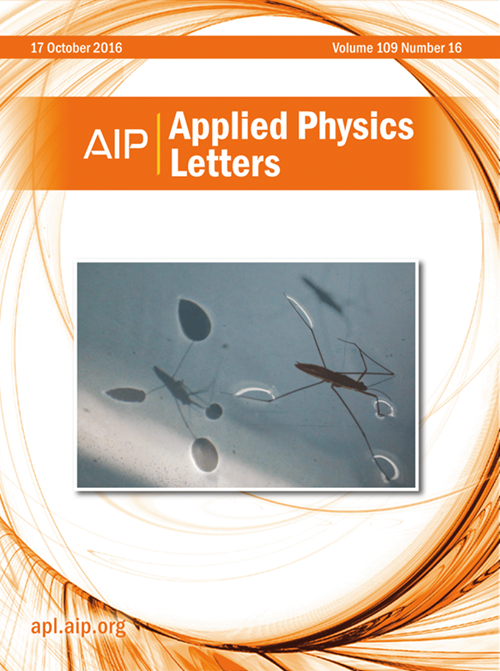VX2 (X = S, Se, Te) monolayers: Intrinsic quantum anomalous Hall insulator with high Curie temperature and large gap
IF 3.5
2区 物理与天体物理
Q2 PHYSICS, APPLIED
引用次数: 0
Abstract
Two-dimensional (2D) magnetic materials have flourished to date, with ferromagnetic (FM) materials providing a broad platform for exploring the novel quantum anomalous Hall (QAH) effect. However, the extremely low working temperature in most QAH candidates significantly limits the experimental realization. Herein, we designed a series of transition metal chalcogenide VX2 (X = S, Se, Te) monolayers using first-principles calculations and investigated their electronic and topological properties. The results indicate that all these materials are dynamically stable FM 2D materials. Notably, VTe2 is identified as an intrinsic room-temperature QAH insulator with the Chern number of C = 1 and a sizable bandgap of 0.14 eV. This large bandgap arises from the band inversion between the spin-up bands contributed by the px and py orbitals of Te atoms. Additionally, VTe2 exhibits a Curie temperature of 444 K, exceeding the room temperature. VS2 and VSe2 monolayers are FM semiconductors whose electronic properties can be turned by applying external strains. Among them, the VSe2 monolayer becomes a QAH insulator with C = 1 under suitable biaxial compressive strains. This study introduces a category of QAH candidates that show significant promise for implementation in spintronic devices.VX2 (X = S, Se, Te)单层:具有高居里温度和大间隙的本征量子反常霍尔绝缘子
迄今为止,二维(2D)磁性材料蓬勃发展,铁磁(FM)材料为探索新型量子反常霍尔(QAH)效应提供了广阔的平台。然而,大多数QAH候选器件的极低工作温度极大地限制了实验的实现。本文采用第一性原理计算方法设计了一系列过渡金属硫族VX2 (X = S, Se, Te)单层材料,并研究了其电子和拓扑性质。结果表明,这些材料都是动态稳定的FM二维材料。值得注意的是,VTe2被确定为本征室温QAH绝缘子,其陈氏数为C = 1,带隙为0.14 eV。这个大的带隙是由Te原子的px和py轨道带来的自旋向上带之间的能带反转引起的。此外,VTe2的居里温度为444 K,超过室温。VS2和VSe2单层是调频半导体,其电子特性可以通过施加外部应变来改变。其中,在适当的双轴压缩应变下,VSe2单层成为C = 1的QAH绝缘子。本研究介绍了一类在自旋电子器件中表现出重大实现希望的QAH候选者。
本文章由计算机程序翻译,如有差异,请以英文原文为准。
求助全文
约1分钟内获得全文
求助全文
来源期刊

Applied Physics Letters
物理-物理:应用
CiteScore
6.40
自引率
10.00%
发文量
1821
审稿时长
1.6 months
期刊介绍:
Applied Physics Letters (APL) features concise, up-to-date reports on significant new findings in applied physics. Emphasizing rapid dissemination of key data and new physical insights, APL offers prompt publication of new experimental and theoretical papers reporting applications of physics phenomena to all branches of science, engineering, and modern technology.
In addition to regular articles, the journal also publishes invited Fast Track, Perspectives, and in-depth Editorials which report on cutting-edge areas in applied physics.
APL Perspectives are forward-looking invited letters which highlight recent developments or discoveries. Emphasis is placed on very recent developments, potentially disruptive technologies, open questions and possible solutions. They also include a mini-roadmap detailing where the community should direct efforts in order for the phenomena to be viable for application and the challenges associated with meeting that performance threshold. Perspectives are characterized by personal viewpoints and opinions of recognized experts in the field.
Fast Track articles are invited original research articles that report results that are particularly novel and important or provide a significant advancement in an emerging field. Because of the urgency and scientific importance of the work, the peer review process is accelerated. If, during the review process, it becomes apparent that the paper does not meet the Fast Track criterion, it is returned to a normal track.
 求助内容:
求助内容: 应助结果提醒方式:
应助结果提醒方式:


